Comparative Study of Asparagus Production and Quality in Two Coastal Regions of Peru Based on Meteorological Conditions for Crop Productivity Optimization †
Abstract
:1. Introduction
2. Methodology
2.1. Extraction of Satellite Images from Sentinel-2 via LandViewer
2.2. Study of Climate, Humidity, and Wind in Selected Areas
2.3. Image Processing and Attainment of Desired Classification
2.4. Training and Use of the Neural Network Model (AlexNet)
3. Results
4. Discussion
5. Conclusions
Author Contributions
Funding
Institutional Review Board Statement
Informed Consent Statement
Data Availability Statement
Conflicts of Interest
References
- Romero-Vergel, A.P. TURION: A physiological crop model for yield prediction of asparagus using sentinel-1 data. Eur. J. Agron. 2023, 143, 126690. [Google Scholar] [CrossRef]
- Navrozidis, I.; Alexandridis, T.K.; Dimitrakos, A.; Lagopodi, A.L.; Moshou, D.; Zalidis, G. Identification of purple spot dis-ease on asparagus crops across spatial and spectral scales. Comput. Electron. Agric. 2018, 148, 322–329. [Google Scholar] [CrossRef]
- Wang, M.; Fu, J.; Wu, Z.; Pang, Z. Spatiotemporal Variation of NDVI in the Vegetation Growing Season in the Source Region of the Yellow River, China. ISPRS Int. J. Geo-Inf. 2020, 9, 282. [Google Scholar] [CrossRef]
- Araiza, M.; Guerrero, C.; Olvera, C.; Meada, V.; Espinoza, G.; Bordón, R. Redes Neuronales Convolucionales para la Detección y Clasificación de Enfermedades de Plantas Basadas en Imágenes Digitales. Uazedumx [Internet]. 2018. Available online: http://ricaxcan.uaz.edu.mx/jspui/handle/20.500.11845/1910 (accessed on 30 September 2023).
- Brahimi, M.; Boukhalfa, K.; Moussaoui, A. Deep learning for tomato diseases: Classification and symptoms visualization. Appl. Artif. Intell. AAI 2017, 31, 299–315. [Google Scholar] [CrossRef]
- Silva-Perez, C.; Marino, A.; Cameron, I. Monitoring Agricultural Fields Using Sentinel-1 and Temperature Data in Peru: Case Study of Asparagus (Asparagus officinalis L.). Remote Sens. 2020, 12, 1993. [Google Scholar] [CrossRef]
- EOS DATA ANALYTICS. NDMI: Fórmula del Índice e Interpretación de Valores. EOS Data Analytics. 7 February 2022. Available online: https://eos.com/es/make-an-analysis/ndmi/ (accessed on 14 September 2023).
- Mokhtar, U.; El Bendary, N.; Hassenian, A.E.; Emary, E.; Mahmoud, M.A.; Hefny, H.; Tolba, M.F. SVM-based detection of tomato leaves diseases. In Advances in Intelligent Systems and Computing; Springer International Publishing: Cham, Switzerland, 2015; pp. 641–652. [Google Scholar]
- Centro Nacional de Planeamiento Estratégico (2022). Análisis de Imágenes Satelitales Para el Estudio de Dinámicas Territoriales. Available online: https://cdn.www.gob.pe/uploads/document/file/4010273/CEPLAN%20-%20Analisis%20de%20imagenes%20satelitales_.pdf.pdf (accessed on 13 September 2023).
- Simonyan, K.; Vedaldi, A.; Zisserman, A. Deep Inside Convolutional Networks: Visualising Image Classification Models and Saliency Maps. 2014. Available online: https://arxiv.org/pdf/1312.6034 (accessed on 18 September 2019).
- Kapishnikov, A.; Venugopalan, S.; Avci, B.; Wedin, B.; Terry, M.; Bolukbasi, T. Guided Integrated Gradients: An Adaptive Path Method for Removing Noise. In Proceedings of the IEEE/CVF Conference on Computer Vision and Pattern Recognition, Nashville, TN, USA, 20–25 June 2021; pp. 5050–5058. [Google Scholar]
- Selvaraju, R.R.; Cogswell, M.; Das, A.; Vedantam, R.; Parikh, D.; Batra, D. Grad-CAM: Visual Explanations from Deep Net-works via Gradient-based Localization. Int. J. Comput. Vis. 2020, 128, 336–359. [Google Scholar] [CrossRef]
- Unnikrishnan, A.; Sowmya, V.; Soman, K.P. Deep AlexNet with reduced number of trainable parameters for satellite image classification. Procedia Comput. Sci. 2018, 143, 931–938. [Google Scholar] [CrossRef]

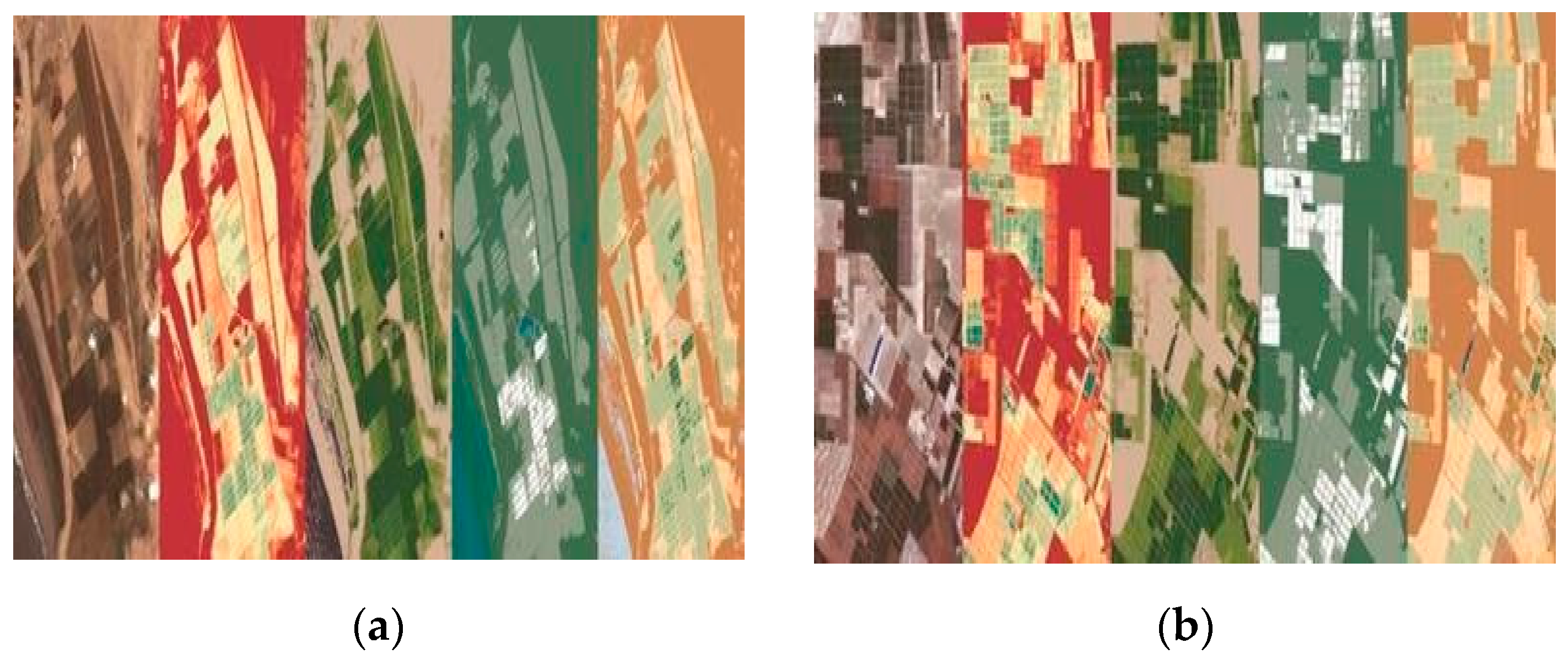
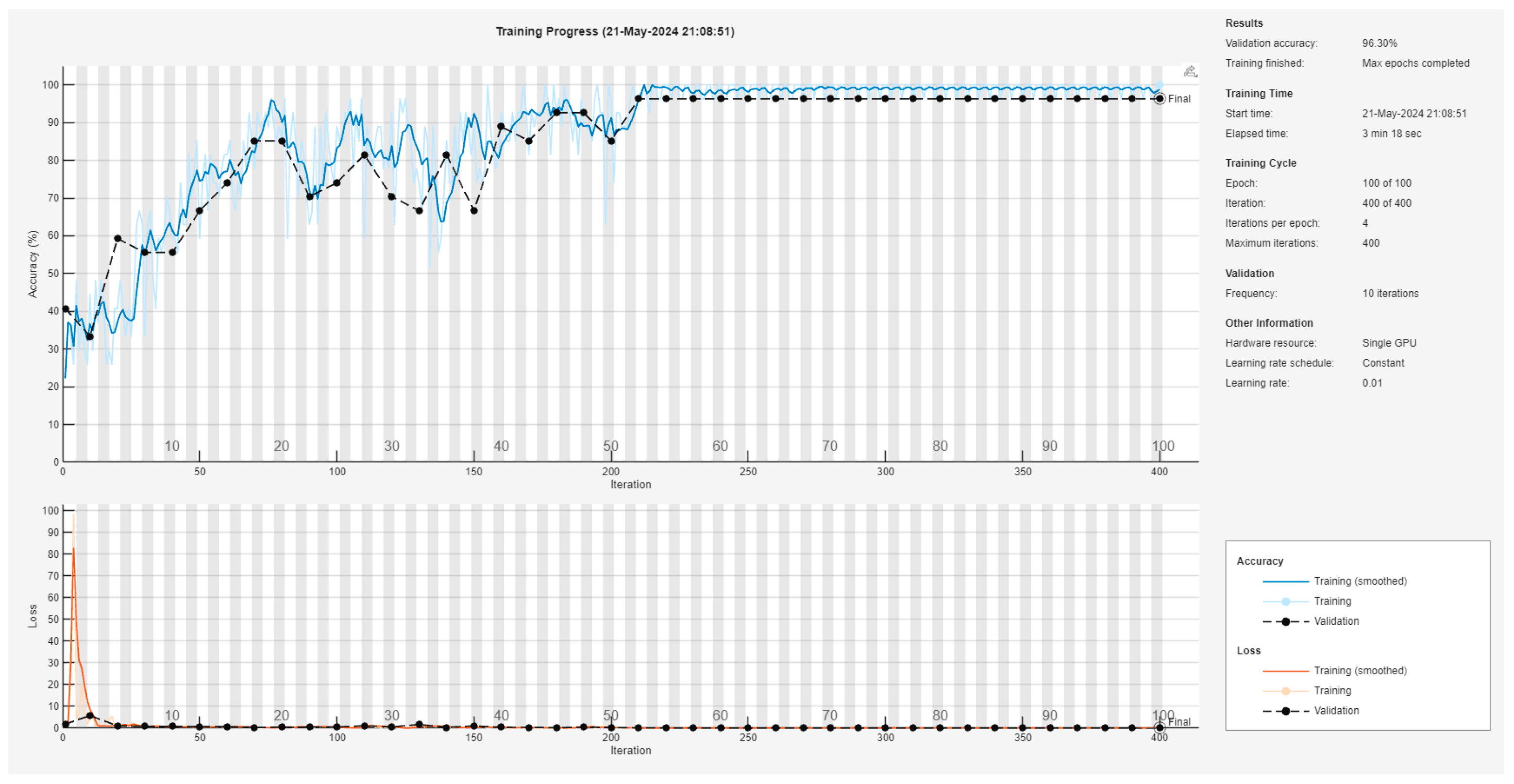

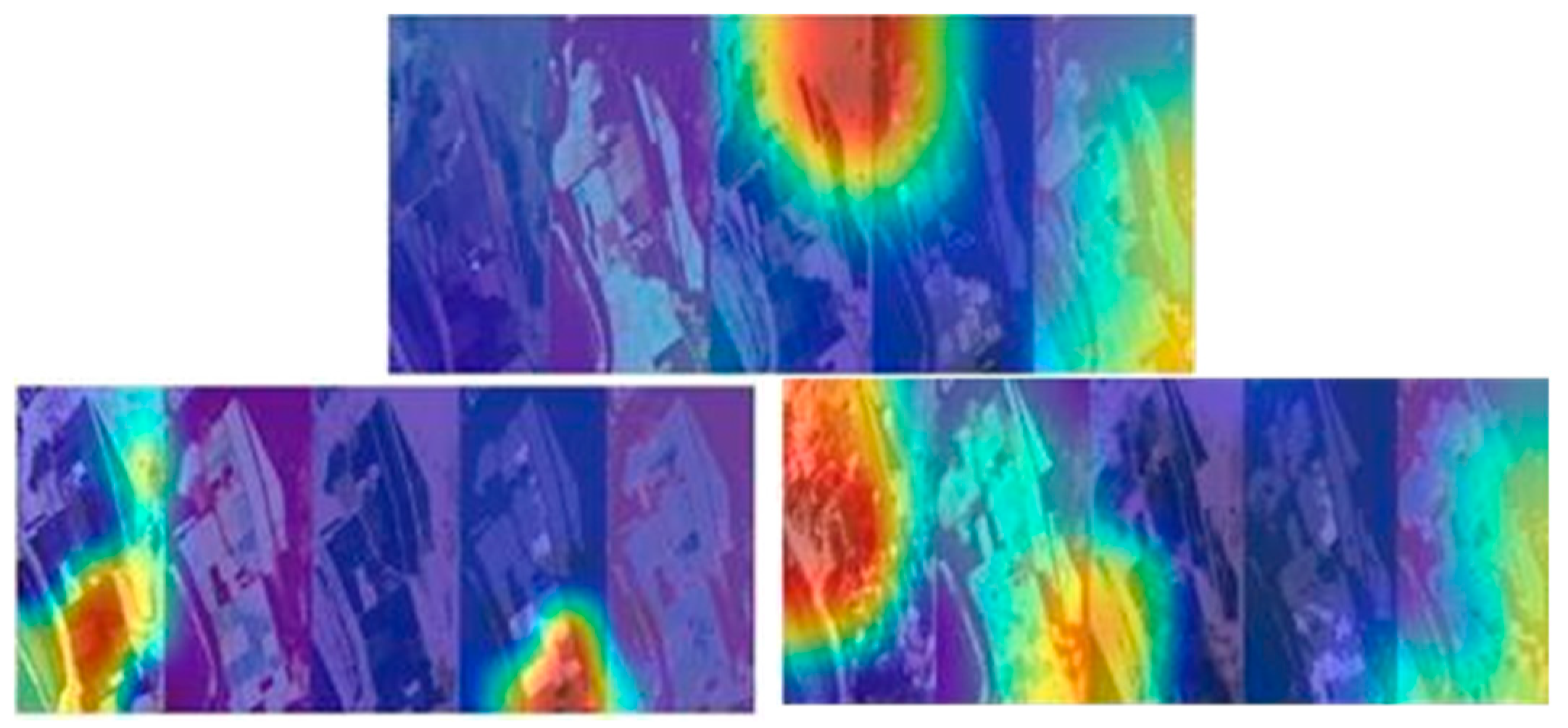
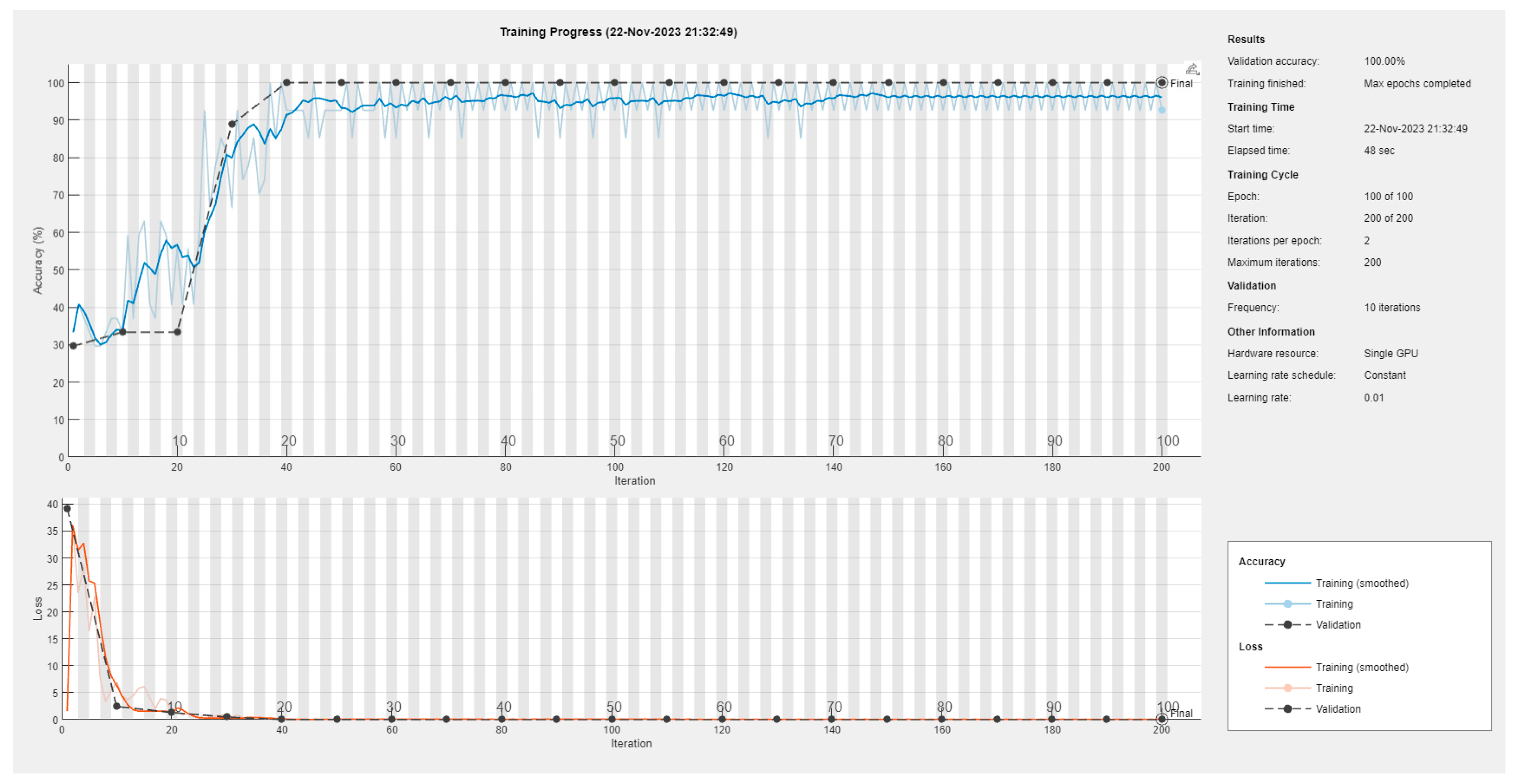
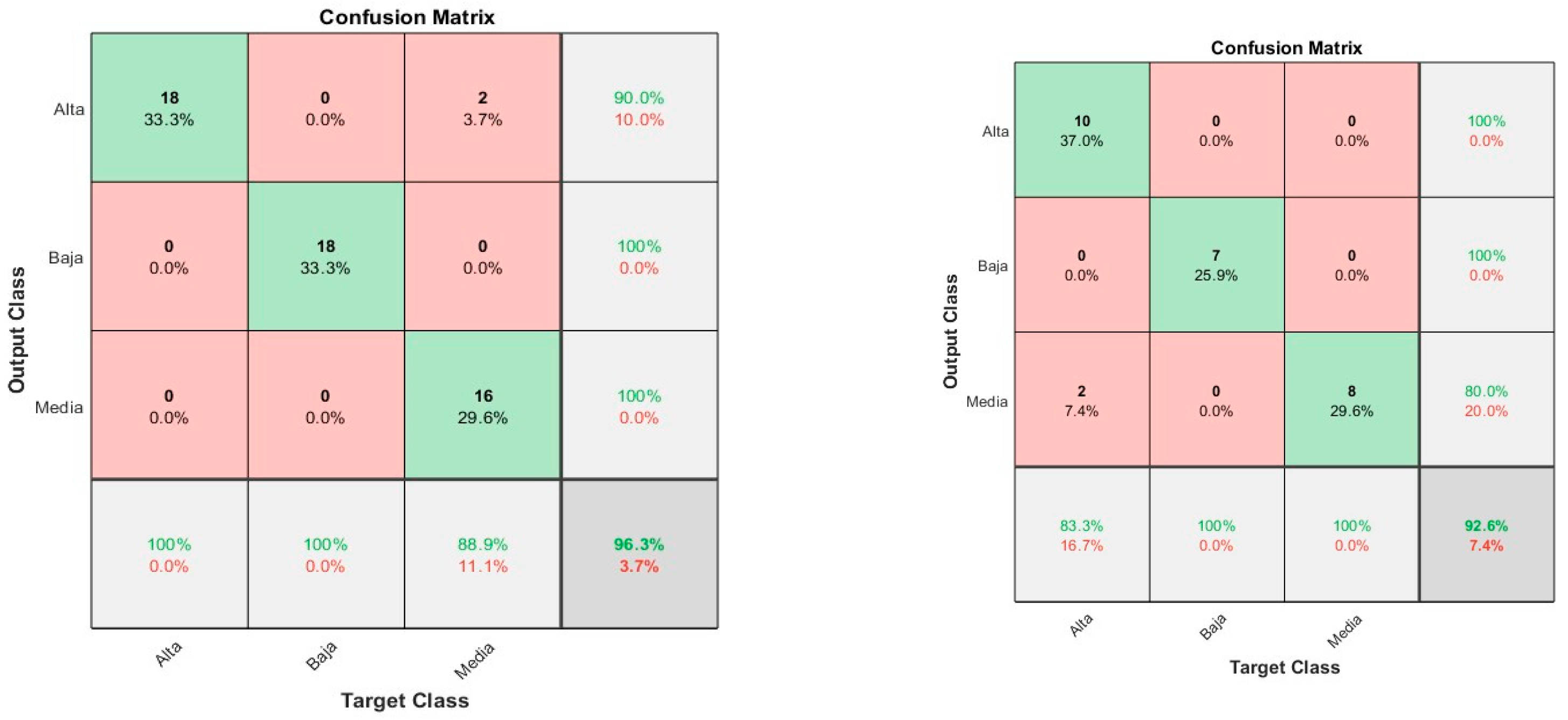

| Index | Range | Detailed Interpretation |
|---|---|---|
| NDVI | −1 to 1 | −1 to 0: non-vegetated surface, 0 to 1: healthy vegetation and increasing density. |
| NDWI | −1 to 1 | −1 to 0: non-water or non-aqueous surfaces, 0 to 1: areas with water presence. |
| EVI | −1 to 1 | −1 to 0: non-vegetated surface, 0 to 1: healthy vegetation and increasing density. |
Disclaimer/Publisher’s Note: The statements, opinions and data contained in all publications are solely those of the individual author(s) and contributor(s) and not of MDPI and/or the editor(s). MDPI and/or the editor(s) disclaim responsibility for any injury to people or property resulting from any ideas, methods, instructions or products referred to in the content. |
© 2025 by the authors. Licensee MDPI, Basel, Switzerland. This article is an open access article distributed under the terms and conditions of the Creative Commons Attribution (CC BY) license (https://creativecommons.org/licenses/by/4.0/).
Share and Cite
Castillo, S.; Villamizar, P.; Piñan, D.; Huaynate, G.; Angulo, A. Comparative Study of Asparagus Production and Quality in Two Coastal Regions of Peru Based on Meteorological Conditions for Crop Productivity Optimization. Eng. Proc. 2025, 83, 14. https://doi.org/10.3390/engproc2025083014
Castillo S, Villamizar P, Piñan D, Huaynate G, Angulo A. Comparative Study of Asparagus Production and Quality in Two Coastal Regions of Peru Based on Meteorological Conditions for Crop Productivity Optimization. Engineering Proceedings. 2025; 83(1):14. https://doi.org/10.3390/engproc2025083014
Chicago/Turabian StyleCastillo, Santiago, Patrick Villamizar, Diego Piñan, Gabriela Huaynate, and Antonio Angulo. 2025. "Comparative Study of Asparagus Production and Quality in Two Coastal Regions of Peru Based on Meteorological Conditions for Crop Productivity Optimization" Engineering Proceedings 83, no. 1: 14. https://doi.org/10.3390/engproc2025083014
APA StyleCastillo, S., Villamizar, P., Piñan, D., Huaynate, G., & Angulo, A. (2025). Comparative Study of Asparagus Production and Quality in Two Coastal Regions of Peru Based on Meteorological Conditions for Crop Productivity Optimization. Engineering Proceedings, 83(1), 14. https://doi.org/10.3390/engproc2025083014







